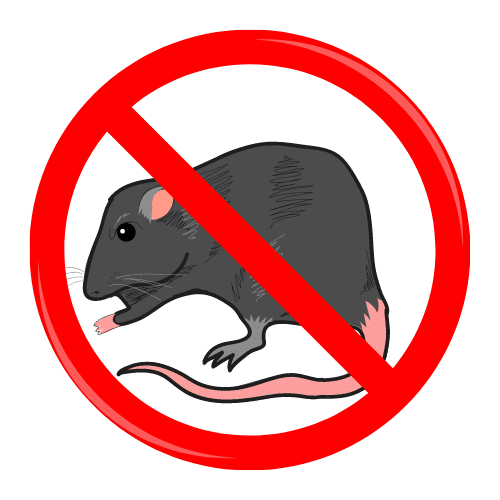Impact of Rodent Control Efforts in Toronto on Beneficial Wildlife Species
Managing rodent populations in urban areas like Toronto is crucial for public health and safety. However, these efforts can sometimes have unintended consequences for other wildlife species that play beneficial roles in the ecosystem. This article delves into the intricate balance between rodent control measures and the well-being of Toronto’s wildlife, exploring the potential risks and suggesting ways to mitigate them.
The Necessity of Rodent Control in Toronto:
- Public Health
Concerns: Rodents are known carriers of various diseases, such as
leptospirosis, hantavirus, and salmonella, which can pose significant
health risks to humans.
- Property Damage:
Rodents can cause extensive damage to buildings, electrical wiring, and
personal belongings, leading to costly repairs.
- Economic Impact: Infestations can affect businesses, particularly in the food industry, where cleanliness and hygiene are paramount.
Given these issues, effective rodent control is essential. However, the methods used must be carefully considered to avoid collateral damage to non-target wildlife.
Common rodent control methods:
- Rodenticides:
These are chemicals specifically designed to kill rodents. They are
effective but can have far-reaching effects on other species.
- Traps:
Mechanical traps are a more targeted approach, but they need regular
monitoring and maintenance.
- Exclusion: This involves sealing entry points to prevent rodents from entering buildings, which is a humane and preventive method.
Each method has its advantages and drawbacks, particularly regarding its impact on the environment and other wildlife.
The Impact of Rodenticides on Wildlife:
Rodenticides, while effective, pose significant risks to non-target
species. These chemicals can enter the food chain, affecting predators that naturally
control rodent populations.
- Secondary Poisoning:
Predatory birds like owls and hawks, as well as mammals such as foxes and
raccoons, can ingest poisoned rodents, leading to secondary poisoning.
- Bioaccumulation:
Rodenticides can accumulate in the bodies of non-target species over time,
leading to chronic health issues and even death.
- Disruption of Ecosystems: The decline in predator populations due to rodenticides can disrupt local ecosystems, leading to an overpopulation of other pests.
Case Studies and Examples:
- The Barn Owl
Population: In various parts of North America, including Toronto, the
use of rodenticides has been linked to a decline in barn owl populations.
These birds play a crucial role in controlling rodent numbers naturally.
- Urban Raptors: Raptors such as hawks and falcons, which thrive in urban environments, have shown signs of rodenticide poisoning. Studies have documented cases where these birds suffer from internal bleeding and other symptoms related to rodenticide ingestion.
The Role of Beneficial Wildlife in Natural Rodent Control:
Many wildlife species contribute to natural rodent control, reducing
the need for chemical interventions.
- Predatory Birds:
Raptors, including hawks, owls, and falcons, are effective rodent hunters.
They can significantly reduce rodent populations in urban areas.
- Mammalian Predators:
Foxes, coyotes, and raccoons also prey on rodents, helping to keep their
numbers in check.
- Snakes and Other Reptiles: Some snake species are natural rodent predators, contributing to the balance of the ecosystem.
Promoting the presence of these natural predators can be a sustainable and environmentally friendly approach to rodent control in Toronto.
Strategies for Minimizing Harm to Beneficial Wildlife:
To protect beneficial wildlife while managing rodent populations,
integrated pest management (IPM) strategies can be employed. These strategies
focus on long-term prevention and use a combination of biological, cultural, mechanical,
and chemical methods.
- Habitat
Modification: Altering the environment to make it less attractive to
rodents can reduce the need for chemical controls. This includes proper
waste management and securing food sources.
- Biological Controls:
Encouraging the presence of natural predators by providing habitats and
reducing threats to these species.
- Mechanical and
Physical Controls: Using traps and barriers to prevent rodents from
entering buildings without harming other wildlife.
- Selective Use of Rodenticides: When chemical controls are necessary, using targeted applications and safer formulations can minimize risks to non-target species.
Public Awareness and Community Involvement:
Educating the public and involving the community in rodent control efforts is vital. Awareness campaigns can highlight the importance of protecting beneficial wildlife and promote practices that minimize harm.
- Community Workshops:
These can educate residents on how to implement IPM strategies
effectively.
- Citizen Science
Programs: Engaging the community in monitoring wildlife populations
can provide valuable data and foster a sense of stewardship.
- Partnerships with Wildlife Organizations: Collaborating with conservation groups can enhance efforts to protect non-target species.
Regulatory and Policy Measures:
Governments and regulatory bodies play a crucial role in overseeing
rodent control practices and ensuring they are environmentally responsible.
- Regulation of
Rodenticides: Implementing stricter regulations on the sale and use of
rodenticides can help reduce their impact on non-target wildlife.
- Promotion of IPM
Practices: Governments can incentivize the use of integrated pest
management practices through grants and subsidies.
- Wildlife Protection Laws: Strengthening laws that protect predatory species can help maintain their populations and natural rodent control roles.
Balancing rodent control efforts with the protection of beneficial wildlife species in Toronto is a complex but essential task. By adopting integrated pest management strategies, promoting natural predators, and engaging the community, it is possible to manage rodent populations effectively while safeguarding the city's diverse and beneficial wildlife. This holistic approach not only ensures public health and safety but also contributes to the overall health and stability of Toronto's urban ecosystem.
If you know some more information about rodent control you should click
here!


Comments
Post a Comment